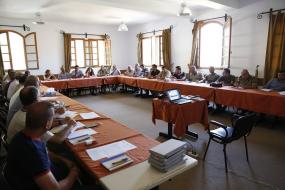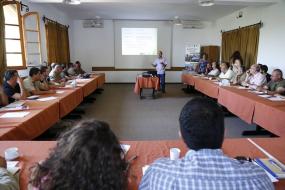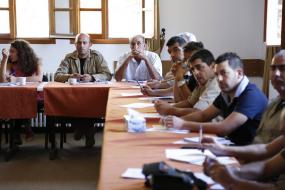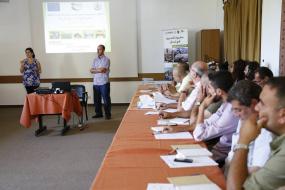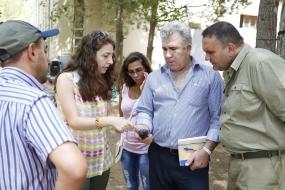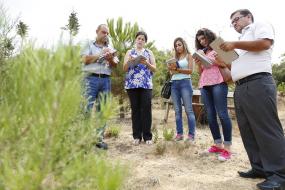One of the primary objectives of the LRI project is to support native tree planting on a large scale across all regions of Lebanon and to do so by strengthening tree-planting practices of local reforestation practitioners.
Working with local communities, LRI and its Lebanese reforestation partners have planted more than 25 different native tree species, including cedar, fir, juniper, pine, oak, wild pear, wild almond, and many others, to promote future forest growth that supports enhanced biodiversity and wildfire protection.
To date, LRI has planted with its partner local communities and NGO partners more than 600,000 high quality native tree seedlings on more than 30 sites across the country with an average survival rate of 76%. For details on sites planted, please refer to “LRI Outplanting Monitoring and Inspection Practices and Results” found in the
“Resources and Materials” section of this website or the map of “Reforestation Activities in Lebanon” found in the
“Forest Mapping” section of this website. All seedlings planted are produced by the Cooperative of Native Tree Producers of Lebanon
(CNTPL).
Starting July 2015, LRI started focusing its planting efforts on specific social and environmental corridors (SECs), including the North SEC extending from Ehden to Ehmej; the Rachaya SEC extending from Rachaiya North towards Masnaa; and the Chouf Biosphere Reserve SEC. In all three regions, LRI is implementing its participatory approach to engage the local communities in planning and implementing reforestation activities (see
Community Engagement section of this website). Maps of those SECs are available on the
“Forest Mapping” section of this website and provide a clear view of gaps within the corridor that need to be reforested to ensure continuity of habitat for wildlife.
At most of its reforestation sites, LRI partners with local organizations on the management of reforestation projects. LRI partner organizations on the reforestation sites include: The Lebanese Armed Forces Civil Military Coordination (CIMIC), Association for Forests Development and Conservation (AFDC), Jouzour Loubnan, Center for Development Democracy and Government (CDDG), Friends of the Cedars Forests in Bcharreh, Tannourine Cedar Forest Nature Reserve Committee, Reforest Lebanon, Rene Moawad Foundation, Al Shouf Cedar Biosphere Reserve, Save Energy Plant Trees (SEPT), Yammouneh Cultural Center.
LRI is also piloting planting on religious-denominated land as an alternative to public land. Religious land planted are presented on the map of “Reforestation Activities in Lebanon” found in the
“Forest Mapping” section of this website. In order to complete planting the gaps on the biocorridors mentioned above, LRI is also seeking funding from private sector companies through their Corporate Social Responsibility departments, as well as diaspora. Proposals are being developed for sites in need for reforestation whereby a trusted NGO partner receives the funding from the donor and implements participatory reforestation activities in partnership with the local community.
LRI CRITERIA FOR REFORESTATION SITE SELECTION
1- Public or religious-endowment land.
2- Located on one of the three corridors (North, Rachaya and Chouf).
3- Land currently not used for any other purpose .
4- Land designated for reforestation by local community/land owners.
5- Land technically suitable for reforestation, with moderate rockiness and availability of soil, soil depth greater than 40cm, moderate vegetation cover with limited natural regeneration, and access to water.
6- Easy access to most parts of the land (Main or agricultural roads).
7- Land clear of landmines or any other security concerns.
8- Engaged local municipality and active community.
9- Sites at higher risk of erosion or land sliding and sites with previous fire history and no regeneration are given priority over others.
Planting on all sites reforested with LRI’s support is accomplished following outplanting best practices developed by LRI technical team in partnerships with its reforestation partners and International experts. For details of those best practices, consult the “Guide to Reforestation Best Practices” on the
“Resources and Materials” section of this website.



